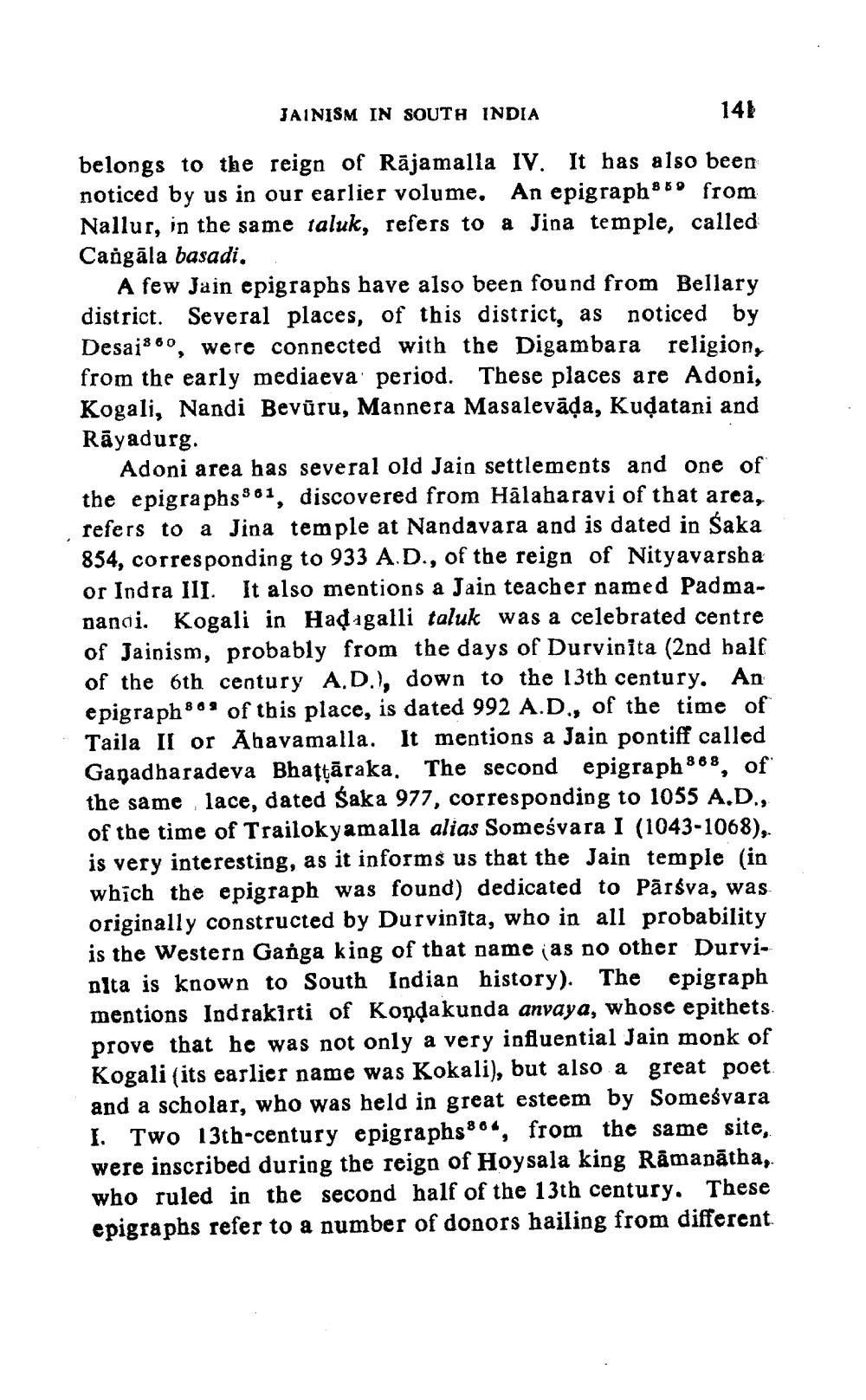________________
JAINISM IN SOUTH INDIA
141
belongs to the reign of Rājamalla IV. It has also been noticed by us in our earlier volume. An epigraph889 from Nallur, in the same taluk, refers to a Jina temple, called Cargāla basadi.
A few Jain epigraphs have also been found from Bellary district. Several places, of this district, as noticed by Desai860, were connected with the Digambara religion, from the early mediaeva period. These places are Adoni, Kogali, Nandi Bevūru, Mannera Masalevāda, Kudatani and Rāyadurg.
Adoni area has several old Jain settlements and one of the epigraphs 361, discovered from Hālaharavi of that area, refers to a Jina temple at Nandavara and is dated in Saka 854, corresponding to 933 A.D., of the reign of Nityavarsha or Indra III. It also mentions a Jain teacher named Padmanangi. Kogali in Hadagalli taluk was a celebrated centre of Jainism, probably from the days of Durvinita (2nd balf of the 6th century A.D., down to the 13th century. An epigraph 8 68 of this place, is dated 992 A.D., of the time of Taila Il or Abavamalla. It mentions a Jain pontiff called Ganadharadeva Bhattāraka. The second epigraph 868, of the same lace, dated Śaka 977, corresponding to 1055 A.D., of the time of Trailokyamalla alias Someśvara I (1043-1068), is very interesting, as it informs us that the Jain temple (in which the epigraph was found) dedicated to Pārsva, was originally constructed by Durvinita, who in all probability is the Western Ganga king of that name as no other Durvialta is known to South Indian history). The epigraph mentions Indrakirti of Kondakunda anvaya, whose epithets. prove that he was not only a very influential Jain monk of Kogali (its earlier name was Kokali), but also a great poet. and a scholar, who was held in great esteem by Someśvara 1. Two 13th-century epigraphs86, from the same site, were inscribed during the reign of Hoysala king Rāmanātha, who ruled in the second half of the 13th century. These epigraphs refer to a number of donors hailing from different




